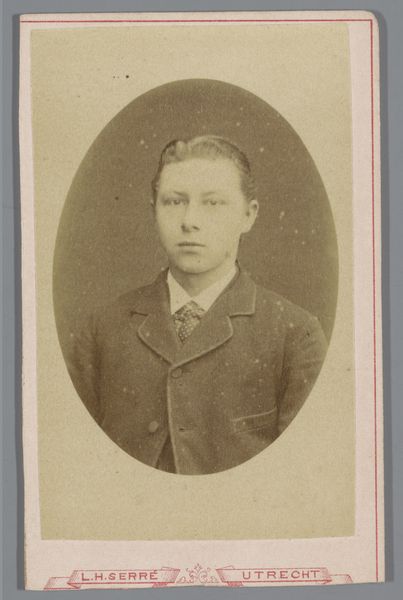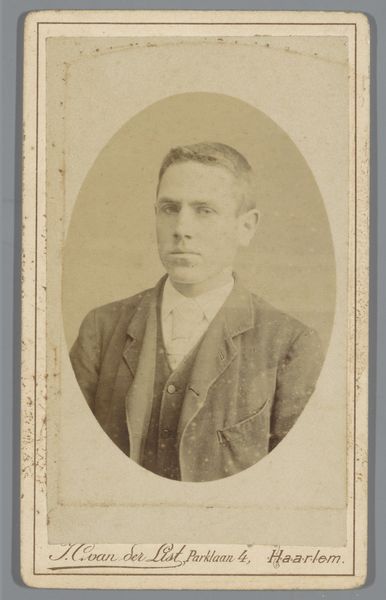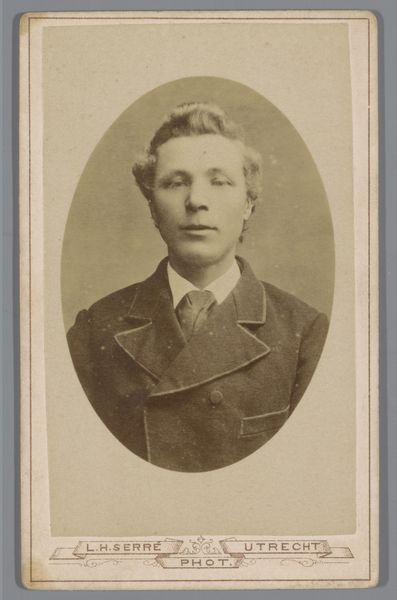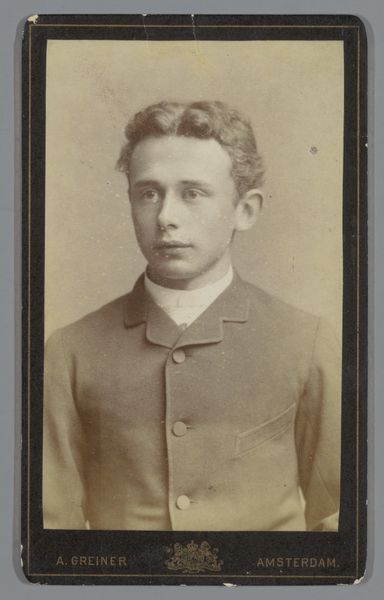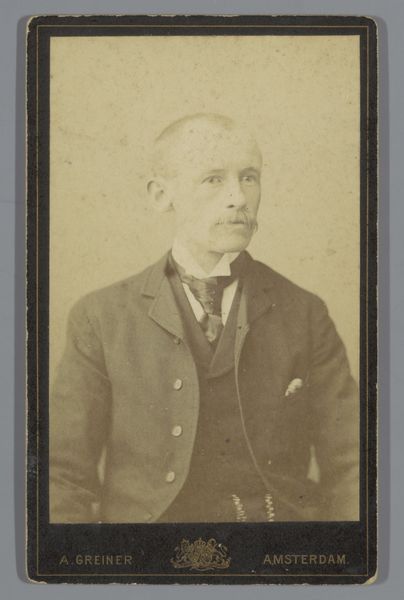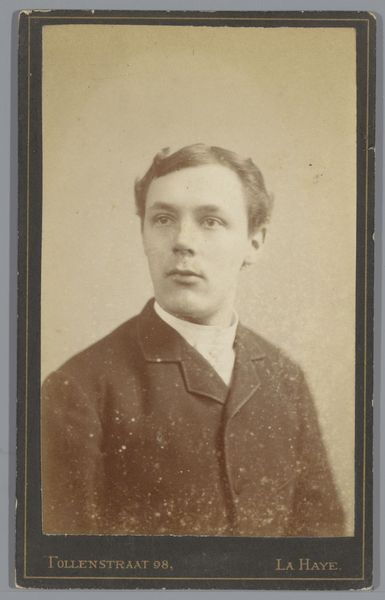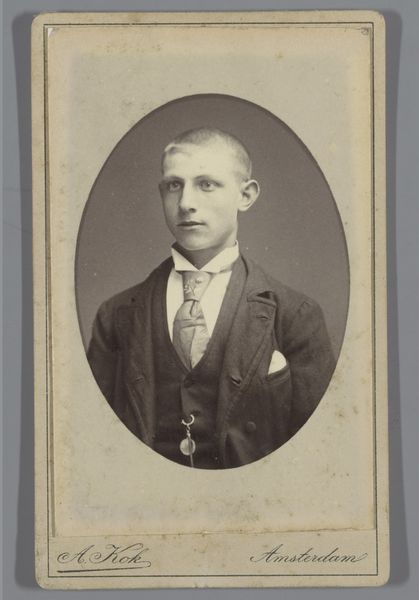
photography, albumen-print
#
portrait
#
photography
#
framed image
#
genre-painting
#
paper medium
#
albumen-print
#
realism
Dimensions: height 103 mm, width 604 mm
Copyright: Rijks Museum: Open Domain
Editor: Here we have Albert Greiner’s "Portret van A.F. Marmelstein," an albumen print, placing it between 1870 and 1900. It strikes me as a very formal depiction; it almost feels like stepping back in time. What’s your take on it? Curator: This portrait intrigues me precisely because it isn't just a representation of a person, but an object produced within specific material and social conditions. Consider the albumen print: a laborious process relying on readily available materials, yet accessible to a rising middle class. The sitter's attire, a suit and pocket watch, signifies status and participation in a burgeoning consumer culture. How does the very *making* of this photograph reflect broader societal shifts, the commodification of image and identity? Editor: So, you're saying the materiality speaks to more than just aesthetic choices? It reflects the society that produced it? Curator: Precisely! Think about the labor involved – the photographer, the assistants, the sourcing of materials. Photography, unlike painting, allowed for a certain democratization of portraiture, making it accessible to a wider range of people, reflecting changing social structures. How might Marmelstein have viewed the purchase of this image? As a way to participate in a cultural moment, or to stake a claim within a society? Editor: It’s like the photograph itself becomes a material symbol of social mobility and identity. I hadn’t considered the labour behind it. Curator: Indeed! And by recognizing that labor, and the systems of production inherent in the image-making, we gain insight into not just the man portrayed, but the complex societal forces at play. It moves beyond mere surface-level appreciation. Editor: It's fascinating to think of this not just as a portrait but as a product of its time, shaped by materials, labor, and aspirations. Thanks for the insightful analysis. Curator: My pleasure. Considering art through a material lens reveals how deeply intertwined it is with our daily lives and broader socioeconomic contexts.
Comments
No comments
Be the first to comment and join the conversation on the ultimate creative platform.

